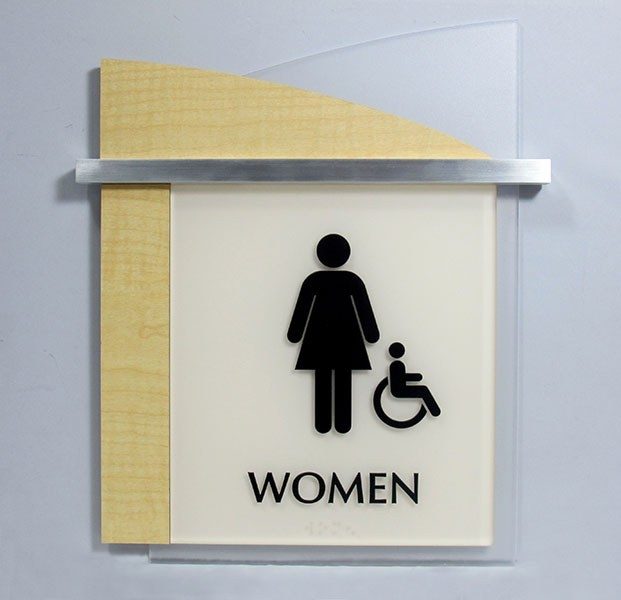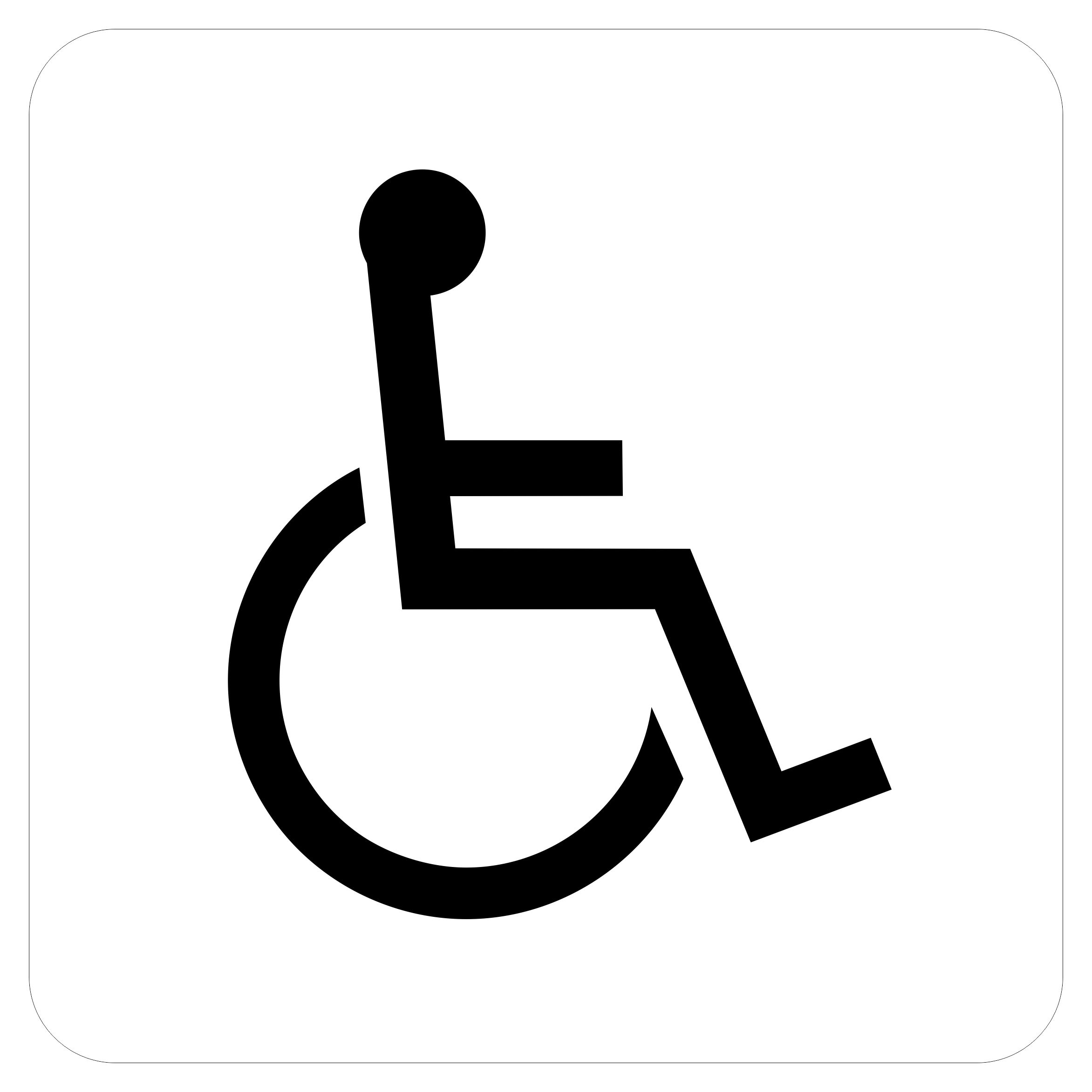Personalizing ADA Signs to Satisfy Your Details Demands
Personalizing ADA Signs to Satisfy Your Details Demands
Blog Article
Checking Out the Secret Features of ADA Indications for Boosted Access
In the realm of access, ADA signs offer as silent yet powerful allies, making certain that spaces are comprehensive and accessible for individuals with handicaps. By integrating Braille and responsive elements, these indicators break barriers for the aesthetically impaired, while high-contrast shade schemes and readable fonts cater to varied visual requirements.
Value of ADA Conformity
Guaranteeing conformity with the Americans with Disabilities Act (ADA) is critical for promoting inclusivity and equivalent access in public areas and offices. The ADA, enacted in 1990, mandates that all public centers, companies, and transportation solutions suit individuals with disabilities, guaranteeing they take pleasure in the very same legal rights and possibilities as others. Conformity with ADA requirements not just meets legal obligations but also boosts an organization's online reputation by showing its commitment to diversity and inclusivity.
One of the essential aspects of ADA conformity is the application of easily accessible signs. ADA indications are designed to make certain that people with specials needs can conveniently browse via structures and areas. These indications need to follow particular standards relating to dimension, font style, color contrast, and placement to guarantee presence and readability for all. Properly implemented ADA signage aids remove obstacles that individuals with specials needs commonly run into, consequently advertising their self-reliance and confidence (ADA Signs).
Additionally, adhering to ADA laws can minimize the danger of legal repercussions and potential penalties. Organizations that fall short to adhere to ADA standards may face suits or charges, which can be both monetarily difficult and damaging to their public picture. Thus, ADA compliance is integral to promoting a fair atmosphere for every person.
Braille and Tactile Aspects
The incorporation of Braille and responsive elements right into ADA signage symbolizes the principles of access and inclusivity. These attributes are essential for people who are visually damaged or blind, allowing them to navigate public areas with better independence and confidence. Braille, a responsive writing system, is important in supplying created information in a style that can be conveniently perceived with touch. It is commonly placed underneath the equivalent text on signage to make sure that people can access the information without visual aid.
Responsive components extend beyond Braille and include increased signs and characters. These parts are designed to be discernible by touch, allowing individuals to recognize area numbers, bathrooms, leaves, and other vital areas. The ADA sets details standards pertaining to the dimension, spacing, and placement of these responsive components to enhance readability and guarantee consistency throughout different environments.

High-Contrast Color Systems
High-contrast shade plans play an essential function in enhancing the visibility and readability of ADA signs for people with visual impairments. These schemes are important as they optimize the distinction in light reflectance between text and background, ensuring that indicators are quickly discernible, also from a range. The Americans with Disabilities Act (ADA) mandates the use of specific shade contrasts to fit those with limited vision, making it an important facet of conformity.
The efficacy of high-contrast check shades hinges on their capability to stand out in numerous lighting conditions, consisting of dimly lit atmospheres and locations with glare. Commonly, dark text on a light history or light message on a dark background is employed to accomplish optimal contrast. Black message on a white or yellow background supplies a raw visual difference that assists in fast recognition and comprehension.

Legible Fonts and Text Size
When thinking about the layout of ADA signage, the selection of clear typefaces and proper message size can not be overemphasized. These components are crucial for ensuring that indications come to individuals with aesthetic problems. The Americans with Disabilities Act (ADA) mandates that typefaces have to be sans-serif and not italic, oblique, manuscript, very decorative, or of uncommon kind. These needs aid make certain that the message is conveniently understandable from a range and that the characters are distinguishable to diverse target markets.
The dimension of the message likewise plays a crucial duty in access. According to ADA standards, the minimal text elevation need to be 5/8 inch, and it needs to raise proportionally with checking out distance. This is specifically crucial in public spaces where signage needs to be reviewed swiftly and accurately. Uniformity in text size adds to a cohesive aesthetic experience, helping individuals in browsing environments successfully.
In addition, spacing in between lines and letters is essential to readability. Sufficient spacing protects against personalities from showing up crowded, improving readability. By adhering to these standards, developers can considerably enhance access, making certain that signage offers its intended purpose for all individuals, no matter of their visual capacities.
Effective Positioning Techniques
Strategic placement of ADA signage is necessary for description maximizing ease of access and making sure conformity with legal standards. ADA guidelines stipulate that signs should be mounted at a height in between 48 to 60 inches from the ground to ensure they are within the line of view for both standing and seated people.
In addition, signs must be put adjacent to the lock side of doors to permit easy identification prior to entrance. This placement helps people situate spaces and spaces without blockage. In situations where there is no door, signs should be positioned on the nearby nearby wall surface. Uniformity in indication placement throughout a center enhances predictability, reducing complication and enhancing total individual experience.

Final Thought
ADA indicators play a vital function in advertising access by integrating functions that resolve the needs of people with disabilities. Including Braille and tactile elements guarantees important details is accessible to the visually impaired, while high-contrast color pattern and legible sans-serif typefaces improve exposure across numerous lights problems. Effective positioning methods, such as appropriate installing heights and calculated areas, additionally assist in navigation. These components collectively foster a comprehensive setting, emphasizing the relevance of ADA conformity in guaranteeing equal access for all.
In the realm of accessibility, ADA indicators offer as quiet yet powerful allies, guaranteeing that areas are accessible and inclusive for people with handicaps. The ADA, passed in 1990, mandates that all public centers, companies, and transportation services accommodate people with handicaps, guaranteeing they delight in the exact same legal rights and opportunities as others. ADA Signs. ADA signs are made to make sure that individuals with disabilities can conveniently browse with areas and structures. ADA standards state that signs should be placed at an elevation between 48 to 60 inches from the ground to ensure they are within the line of sight for both standing and seated people.ADA signs play a crucial duty in advertising ease of access by integrating functions that attend to the needs of individuals with specials needs
Report this page